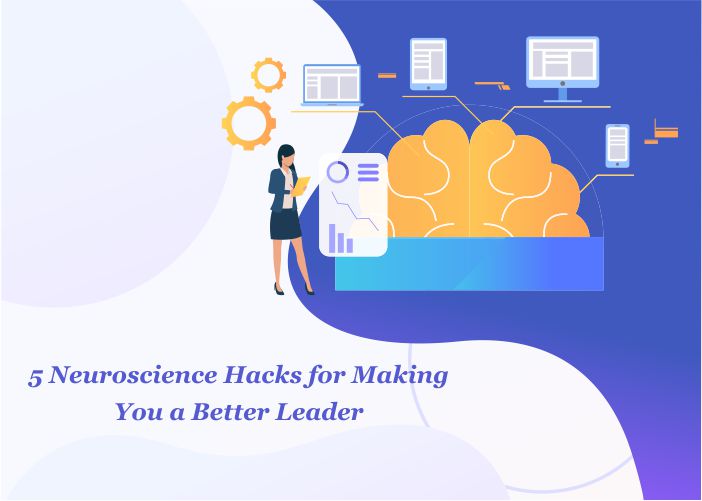
What has neuroscience got to do with leadership? Quite a lot, reveal many studies. The prevalence of anxiety, depression, stress and chaos in the modern day lives can take a toll on leaders.
As per the World Economic Forum’s Global Risks Report 2019, as complex structural changes impact people’s work, relationships and lives, mental health problems now affect an estimated 700 million people worldwide.
Leaders need to confront these facts and find ways to overcome these challenges. A leader needs to understand how the human brain responds to challenges, situations and various events.
Here we look at 5 Neuroscience hacks for better leadership.
1. Learning New Things:
The brain changes throughout your life. The neuroplasticity of the brain is affected when you learn new things. Our brains work better when we keep learning new things. Leaders understand the urge for learning that is inbuilt into the human brain.
Leaders encourage constant learning and help their team take on new challenges. They create a framework where learning, experimentation and growth is encouraged for their team members.
Researchers have found that new neurons are created in the brain associated with learning, memory and emotion throughout adult life. Your brain can be as dynamic as you want it to be.
2. Stress Management

Our brains work best when they are constantly supplemented with physical activity. The physical activity stimulates the chemicals that affect the brain cells. It is immensely helpful in keeping your brain sharp and focused.
As human beings become more and more dependent on technology, the stress in the system builds up. Physical exercise and activity is the best way to release this stress.
Leaders need to know that stress impairs brain functioning. It also speeds up cognitive decline. Physical activity, mindfulness and aerobics can help to manage stress.
3. Leading by Example

According to neuroscientist, Tej Tadi, “brain cells that fire both when a person acts and that person observes the same action performed by another person.”
Leaders must understand that people learn by observing things around them. The brain mimics the behaviour of the persons we associate with. Leaders must set the right examples by leading from the front. They must create a congenial environment where people can learn and grow together.
4. Uncertainty is Good
We all seek predictability and certainty in things we do. But situations and events around us are never predictable. The corporate world, in particular throws many unprecedented and unknown challenges. Leaders need to constantly guard themselves and their teams against the unpredictable.
A Yale University study has shown that the brain benefits from volatility and uncertainty boosts learning. Professor Daeyeol Lee says, “when you enter a more novel and volatile environment, this might enhance the tendency for the brain to absorb more information.”
The brain is not always learning, but adapts according to situations. So, the more challenging situations may bring out the best in the teams.
5. Explain the Why

Our brain works best when it can understand the cause and effect. People are in a state of inertia unless they are compelled to move. Resistance and change can be hard. But when people know the reason why something needs to be done, they figure out the how.
Leaders need to play an important role in defining the why, the purpose to bring out the best in their teams. Our brains are geared to work on positive experiences. When we know something is important and feel connected to it, the results can be taken to a different level altogether.
When leaders understand the psychology of their people, they can connect with them better & bring out the best in them.







